High in the foothills of the Nepalese Himalayas, villagers of the Gurung ethnic group maintain a tradition of hunting for wild honey. In the spring of 2016 I set out into the hills with a production crew from VICE Media to document this ancient tradition.
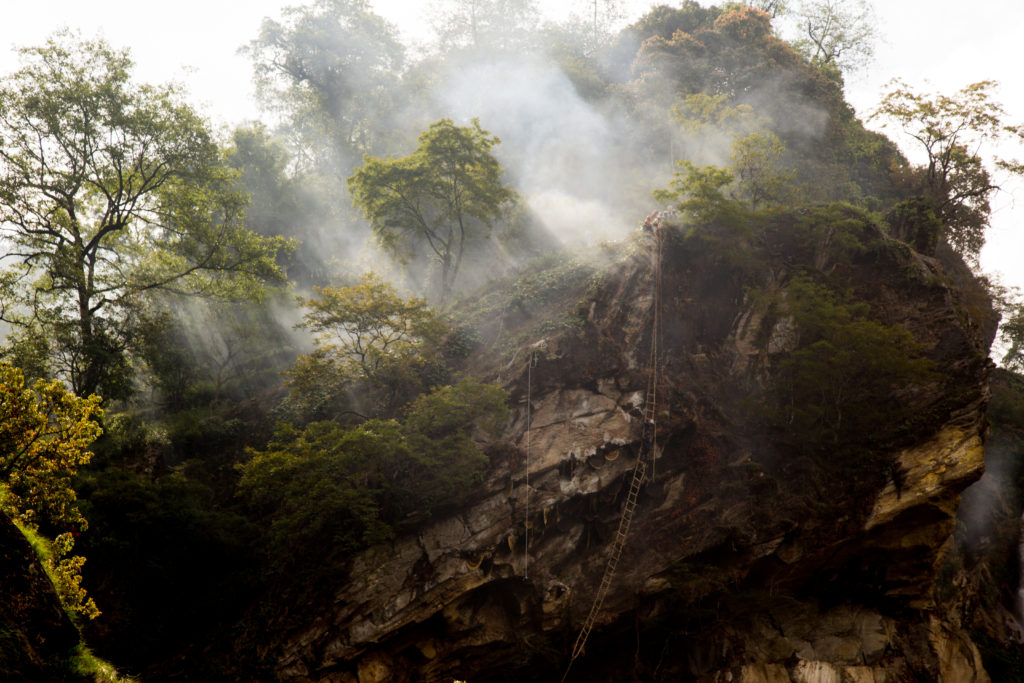
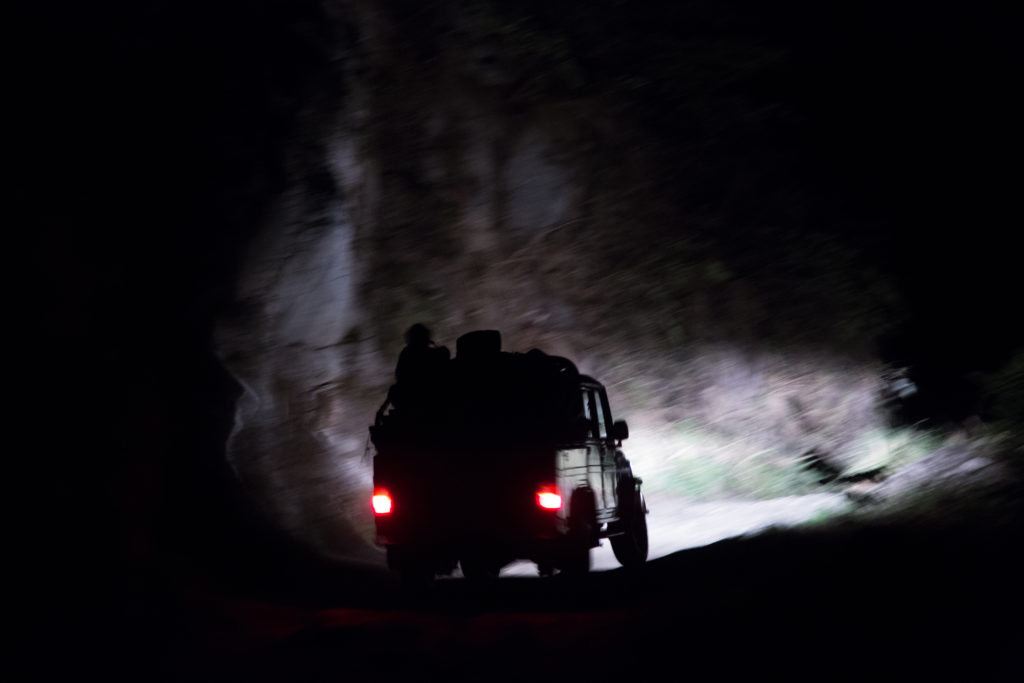
The journey began in an SUV that pushed as far into the hills as it could go. After we had reached the limit of this machine we unloaded our gear and trekked as far into the hills as our legs would take us.
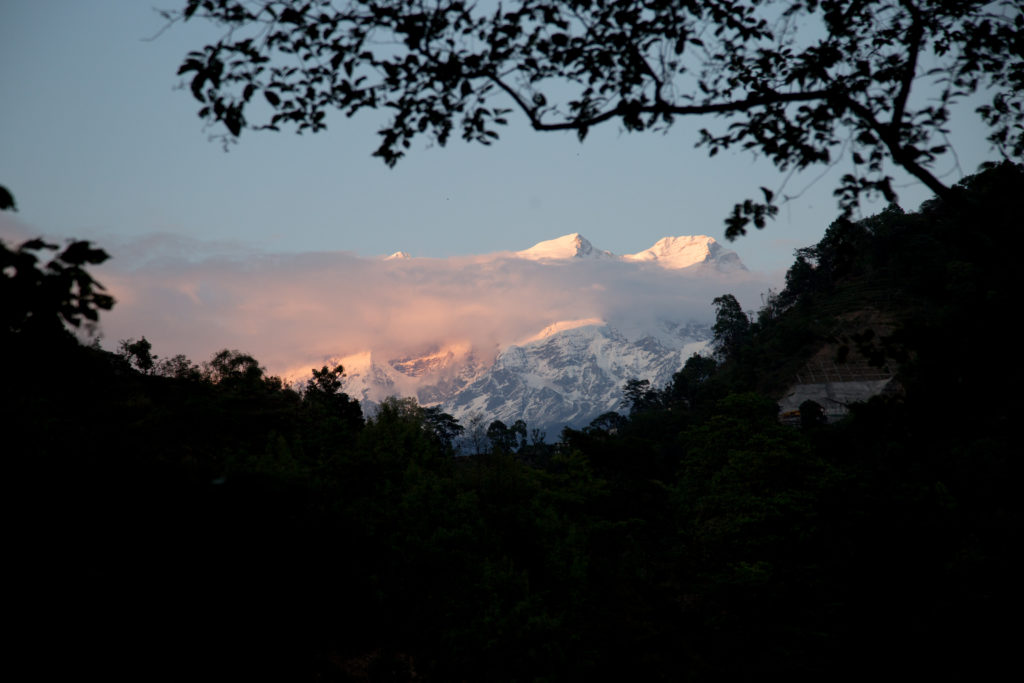
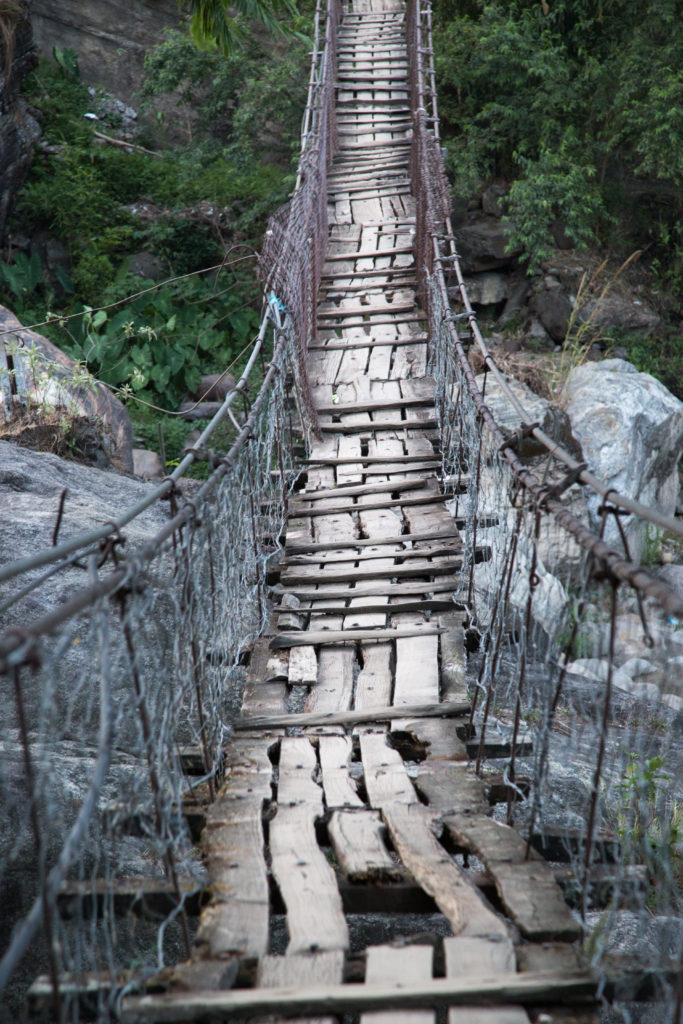
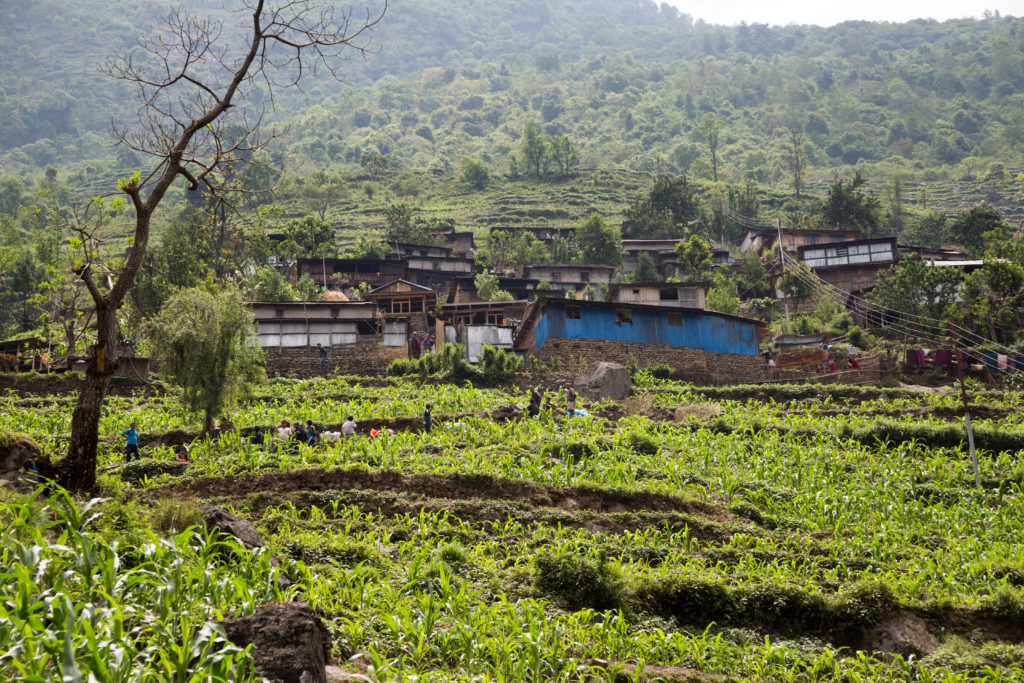
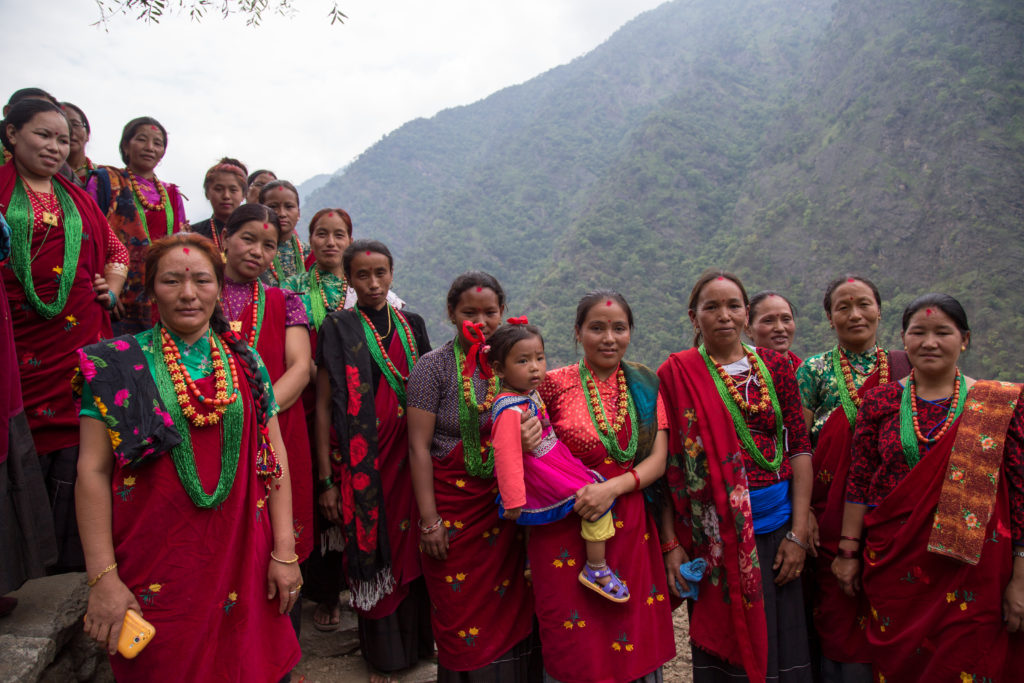
Once we reached the village that we had been searching for we were greeted by the women of the village. We were given orange Buddhist prayer scarves to bless us on our journey. The Gurung harvest honey only two times each year and for them the honey harvest is the most important event of the year. Men in the village have lost their lives in these harvests in the past and thus these hunts are taken very seriously and a high emphasis is placed on maintaining a relationship of respect between the Gurung and their natural environment.
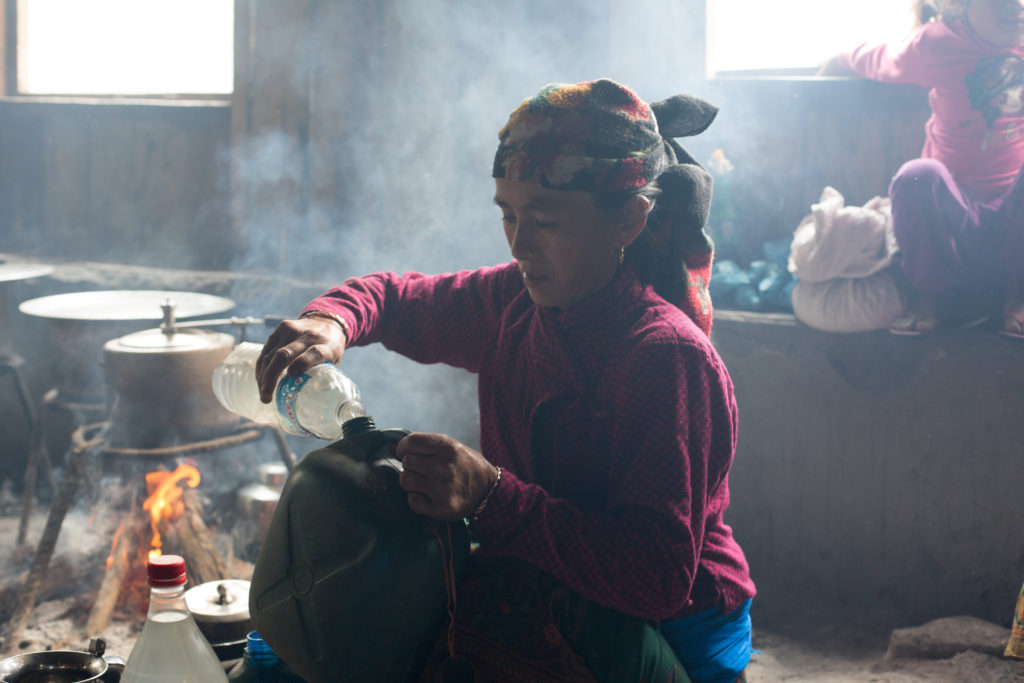
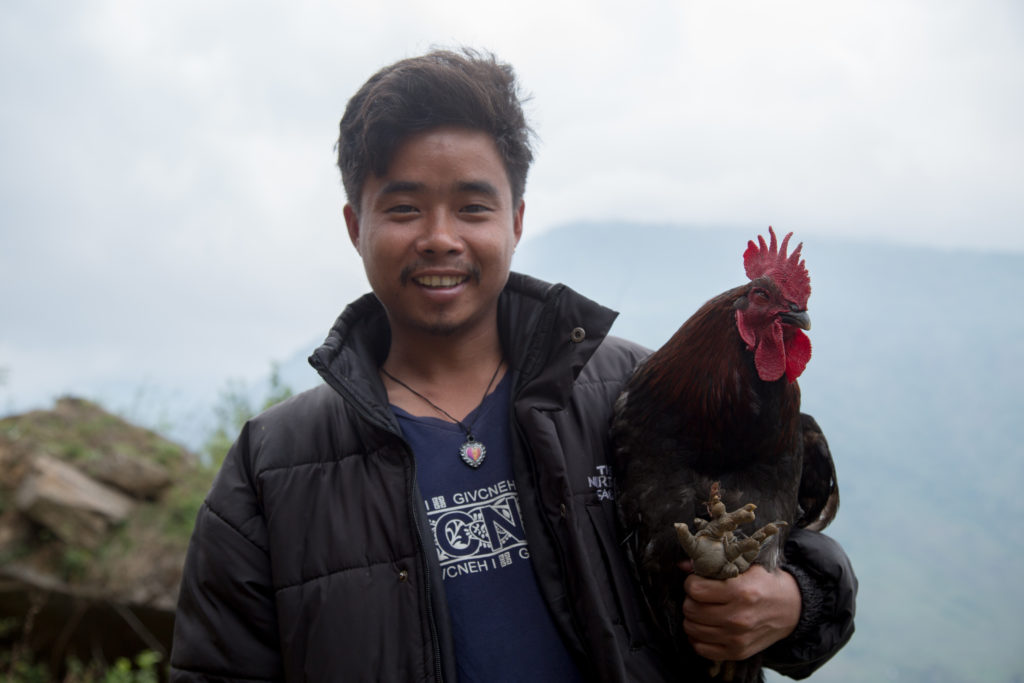
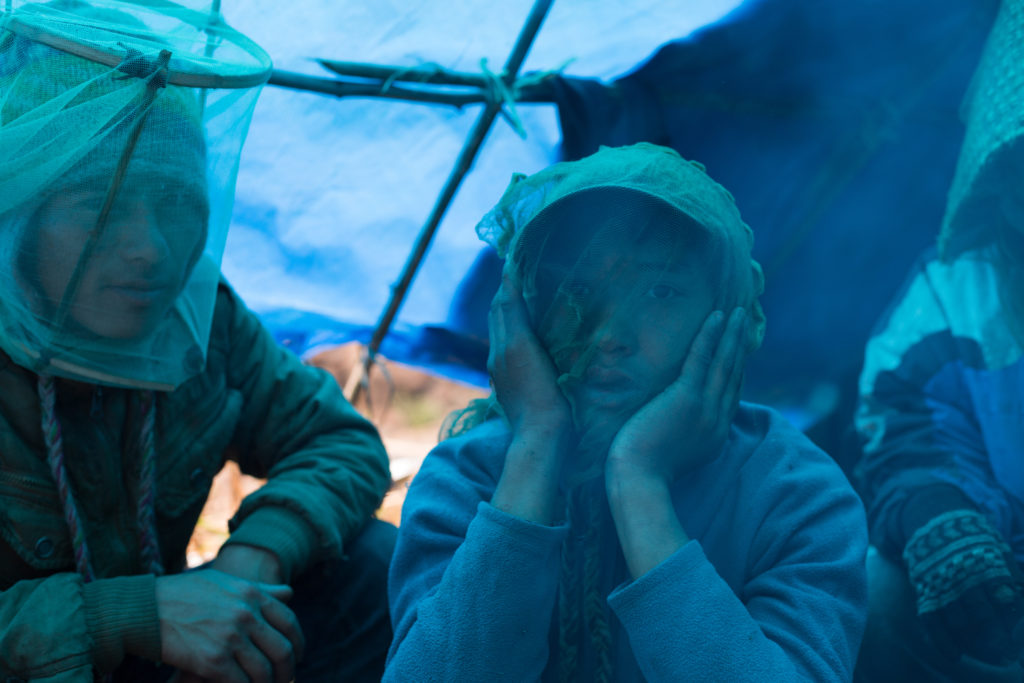
Mixed feelings.
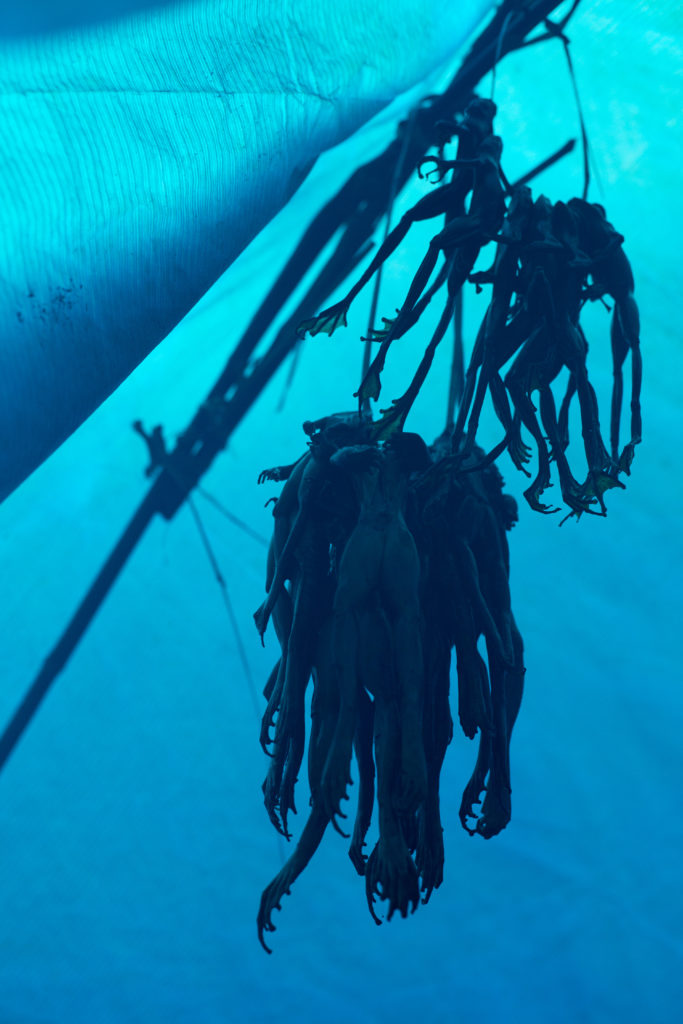
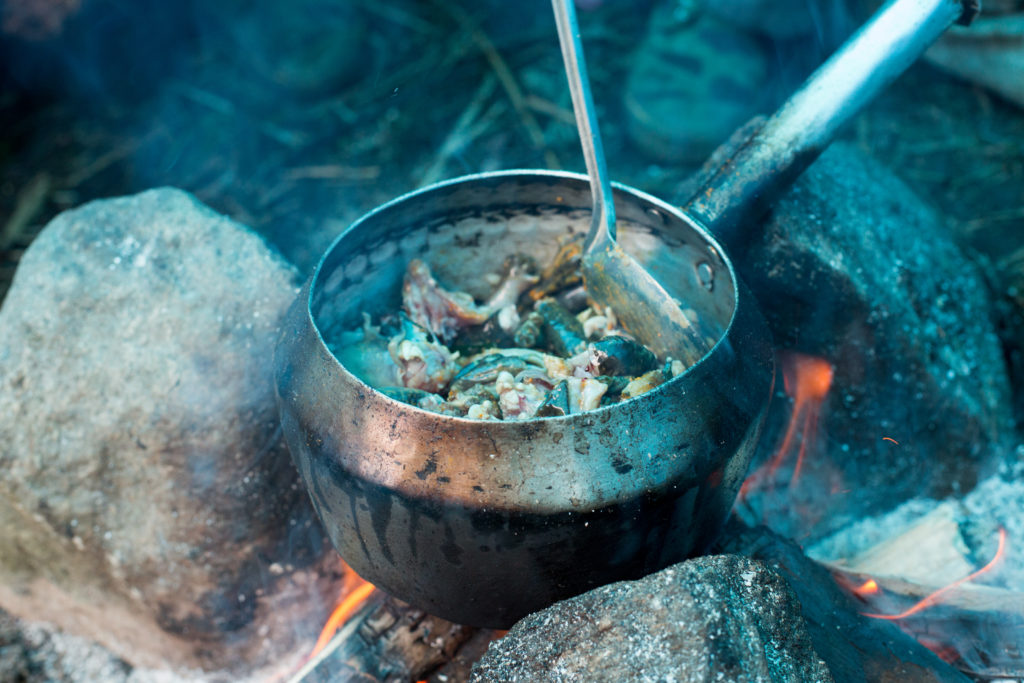
For the hunters, the day begins with an auspicious meal of frog leg stew.
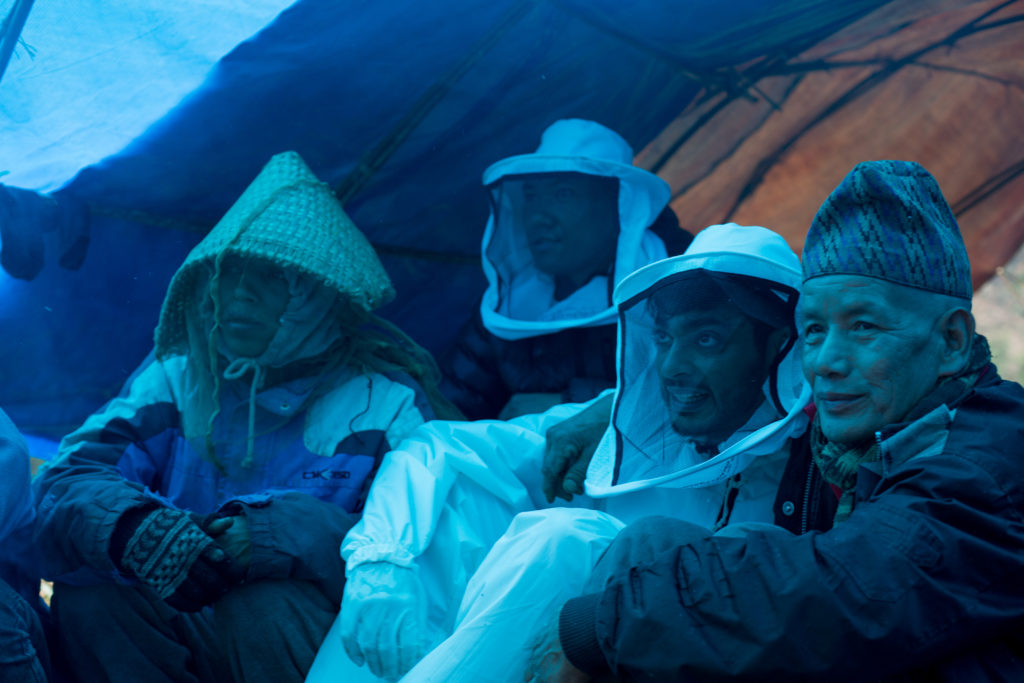
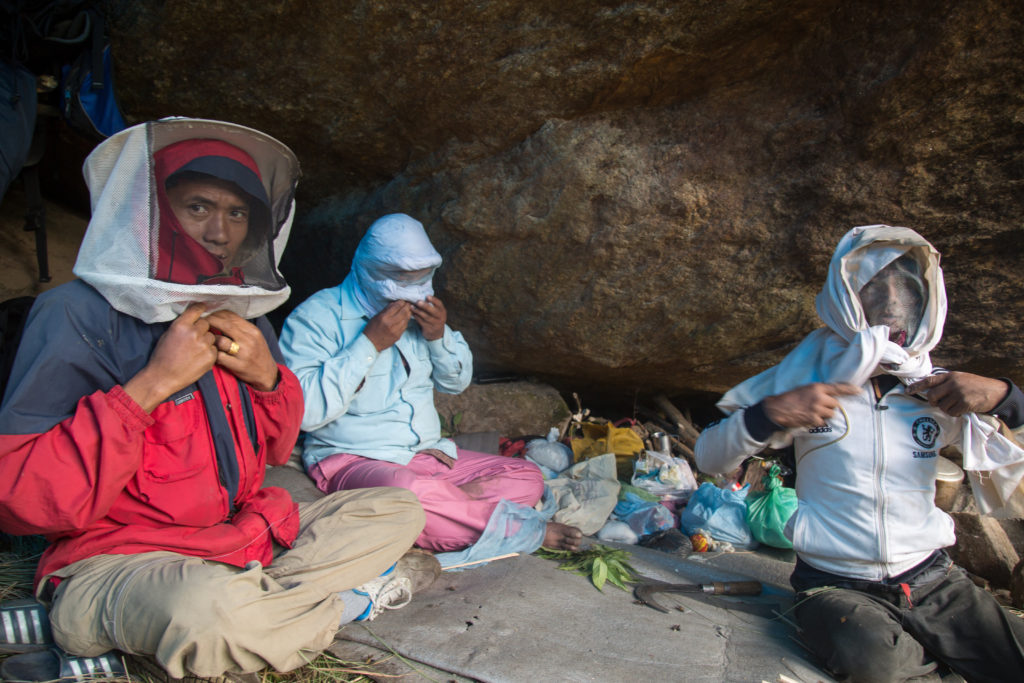
The hunters create protective gear out of whatever resources they have. For some, this includes bits and pieces of actual beekeeping protective wear.
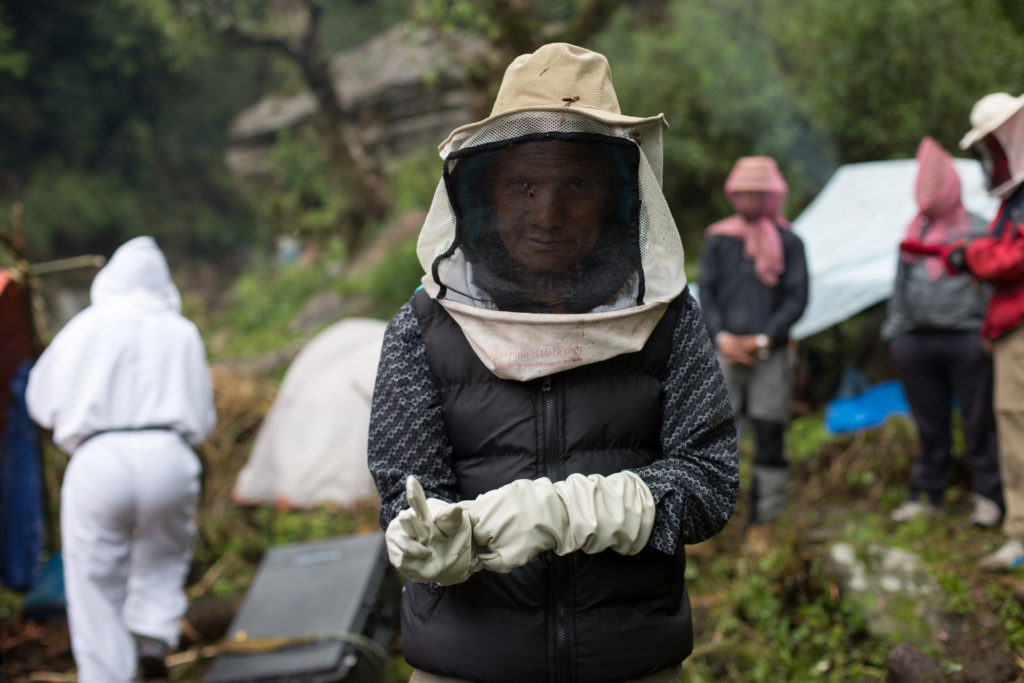
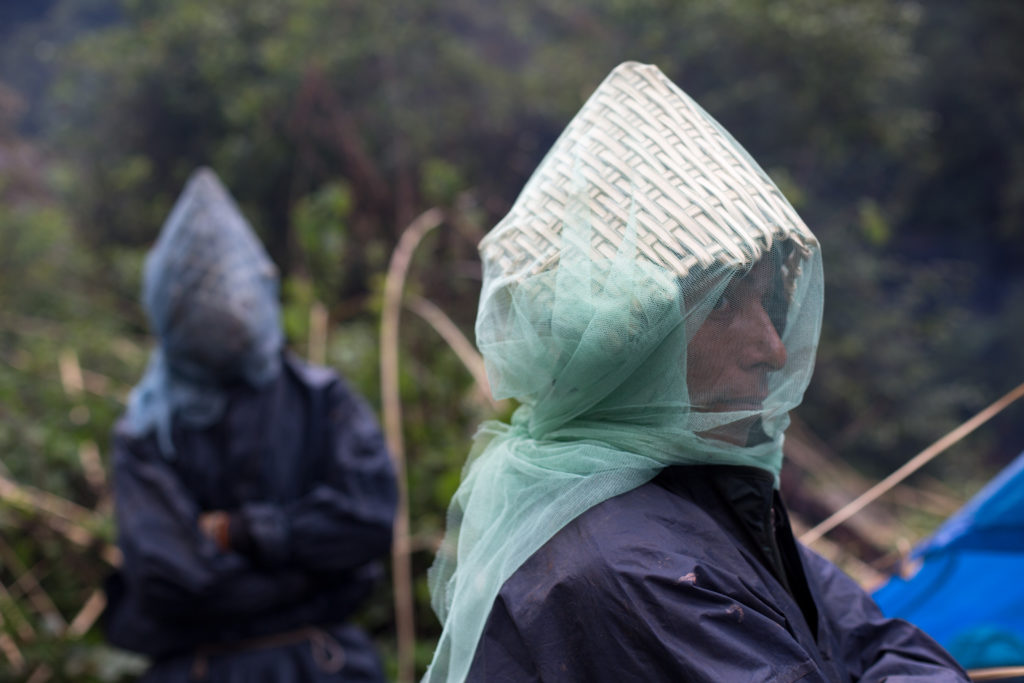
Others are required to be creative.
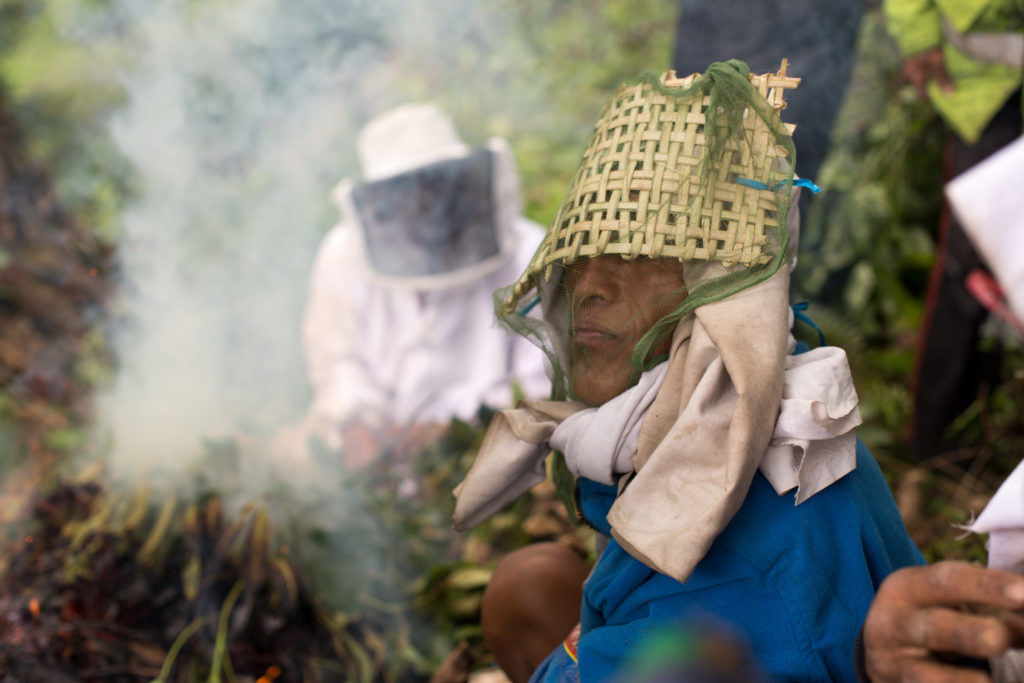
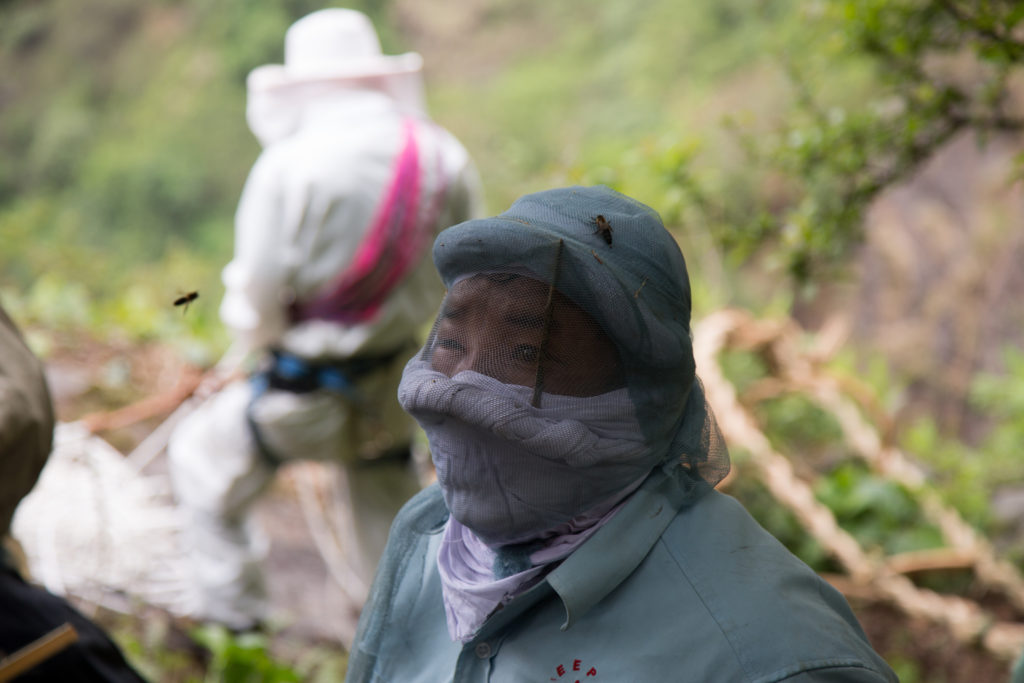
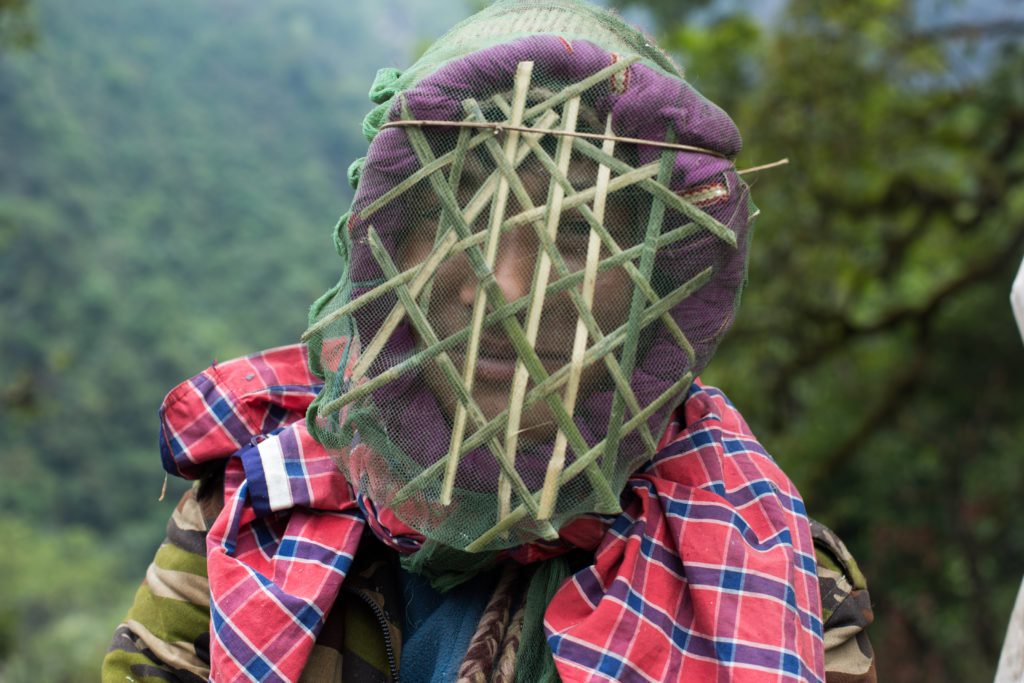
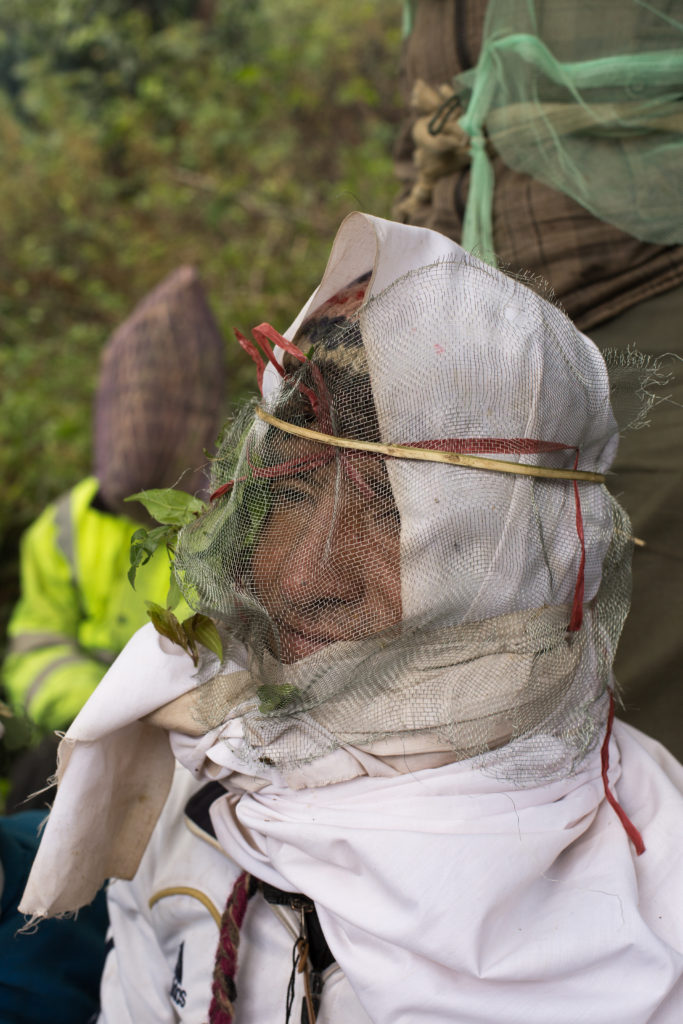
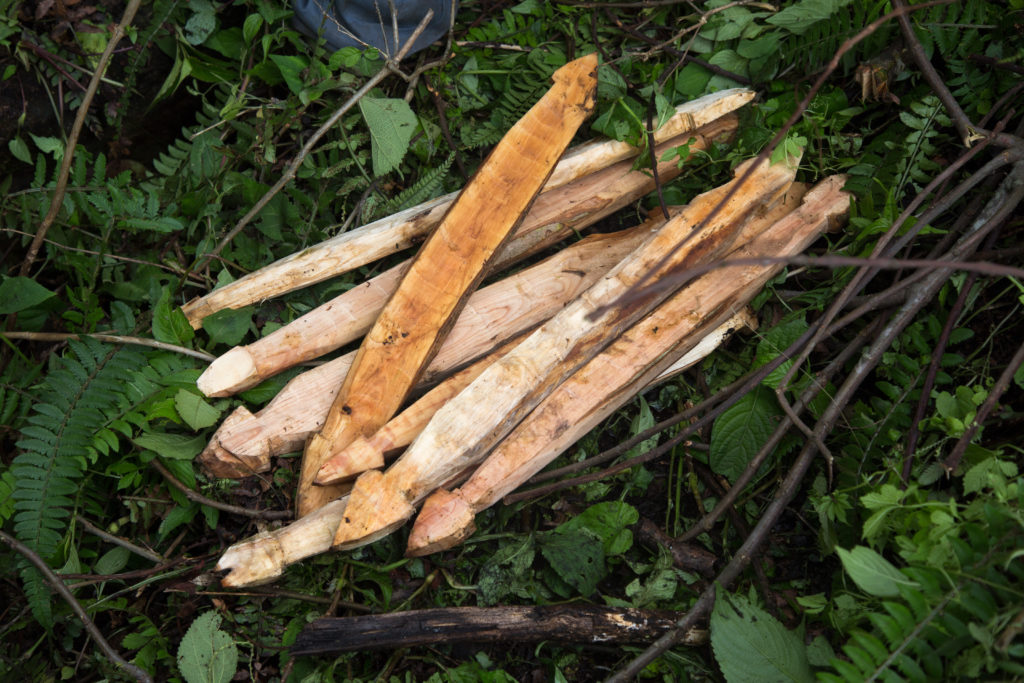
In the same method that has been done for centuries, the Gurung work together to construct a ladder out of wooden rungs and braided bamboo.
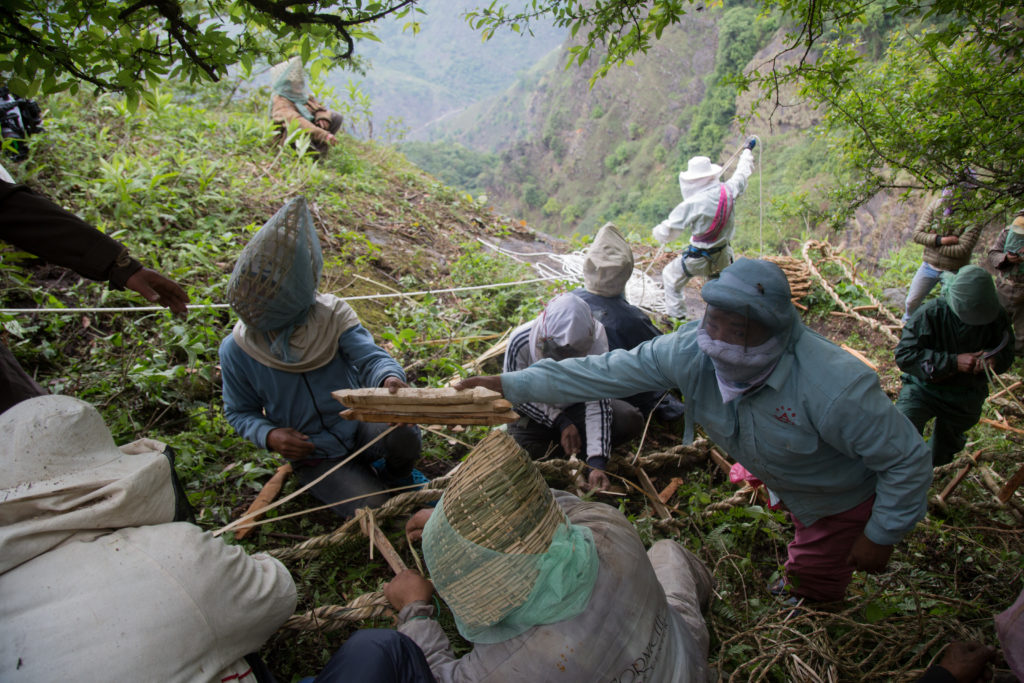
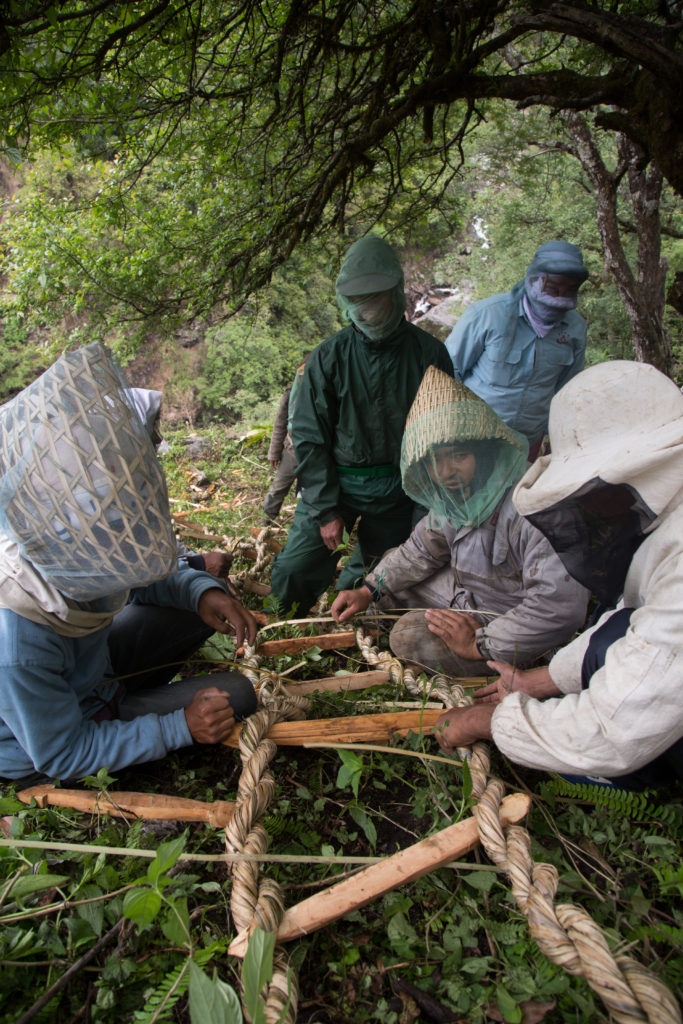
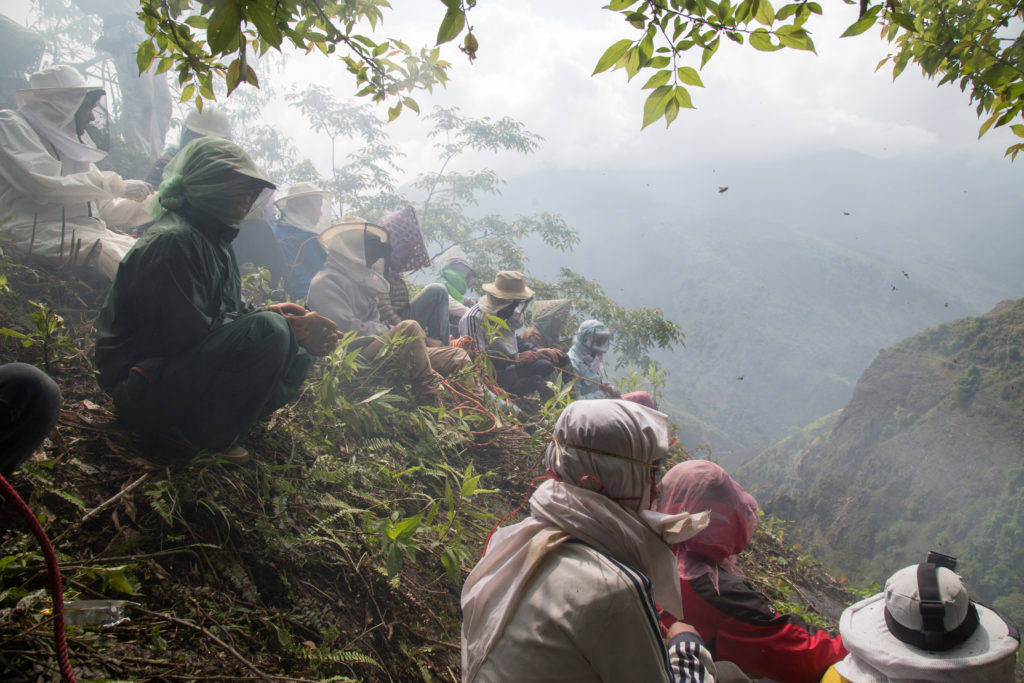
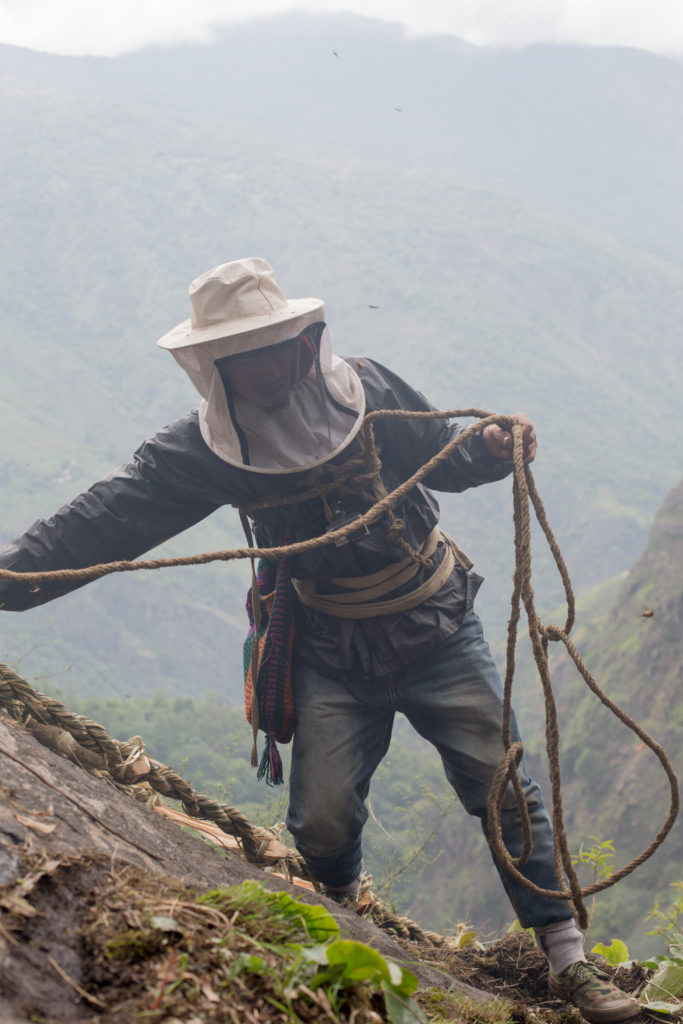
The bees construct their hives on the sides of massive cliffs. This does not stop the Gurung. Several hunters descend the ladder from above while a small group create smoke below to pacify the bees.
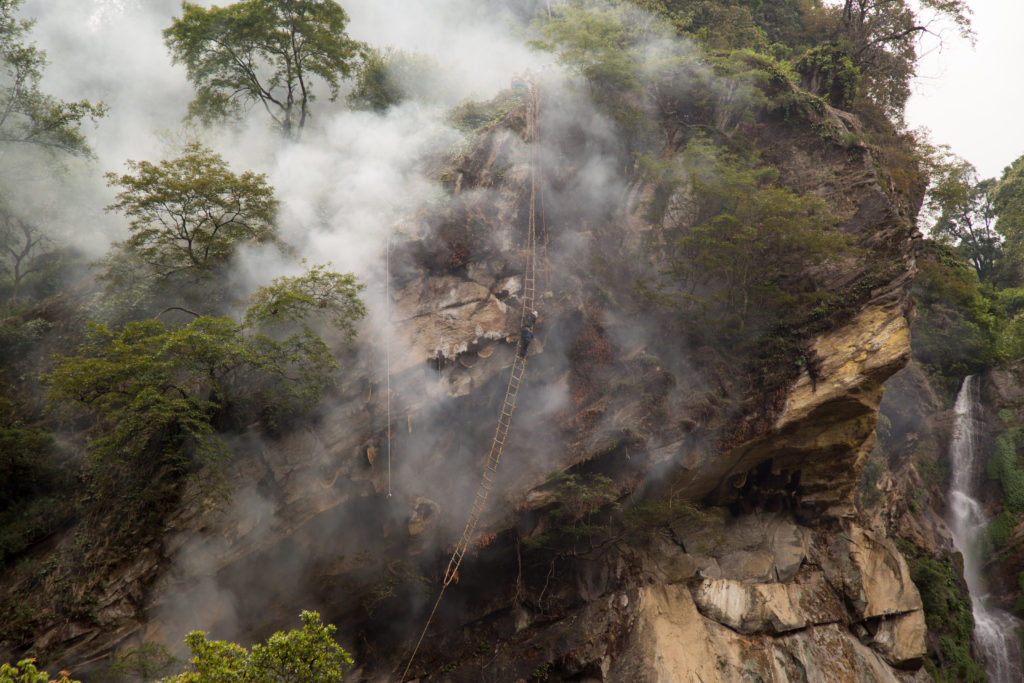
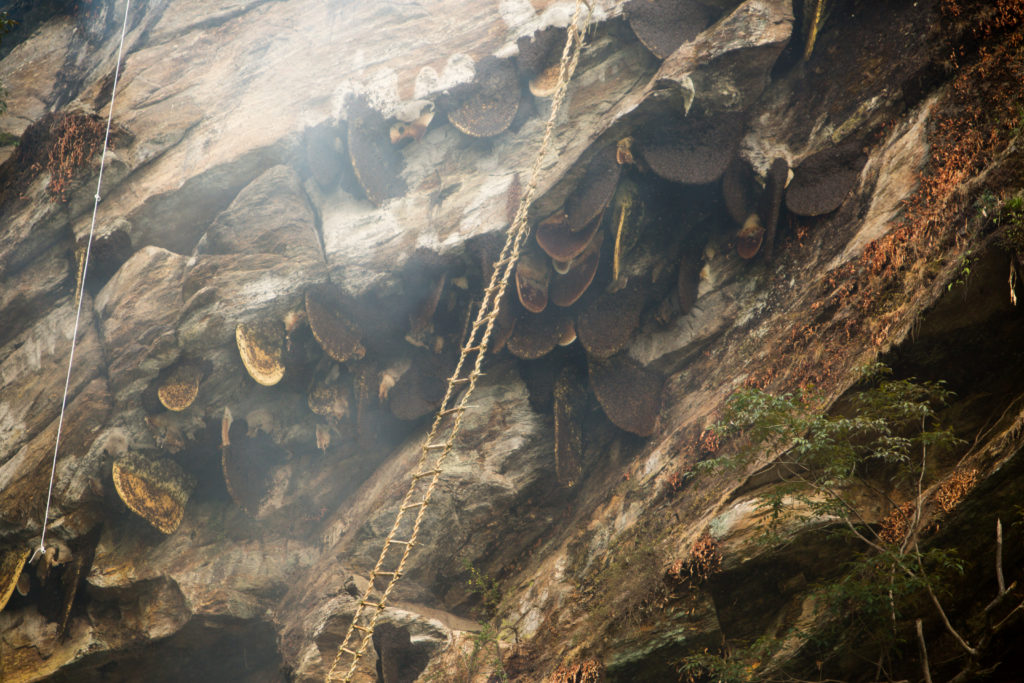
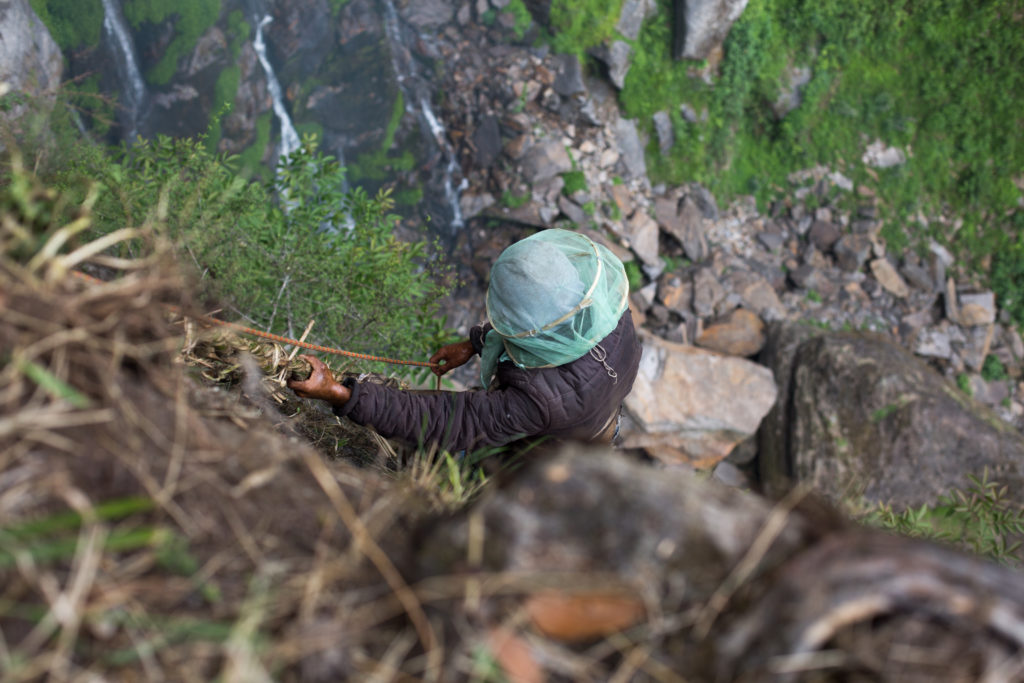
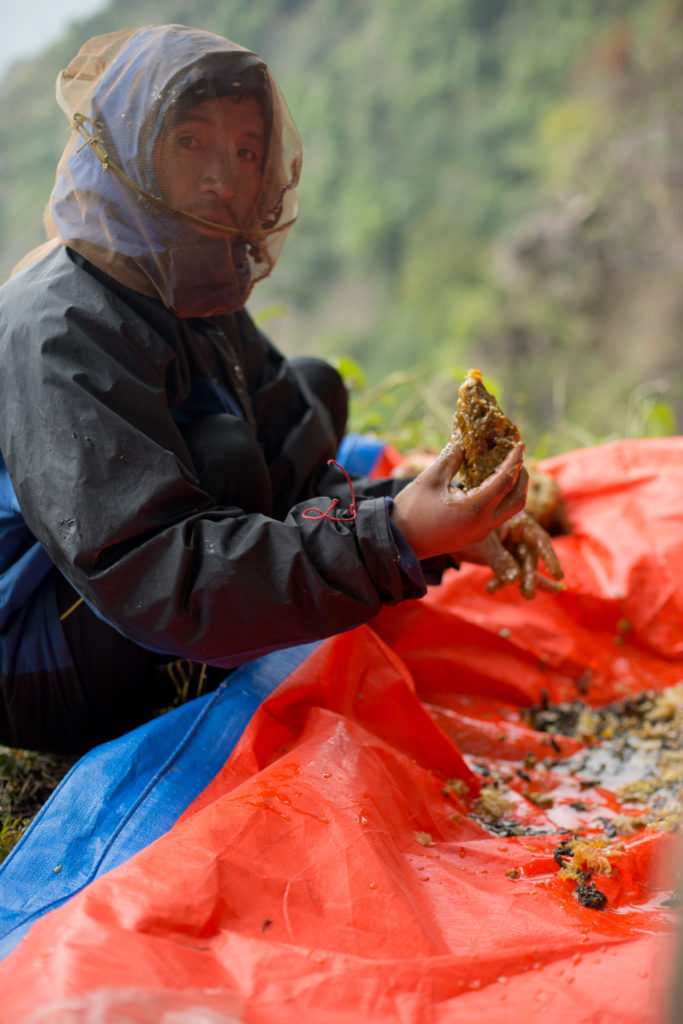
Chunks of honeycomb are knocked from the hives with bamboo poles and into baskets that are hoisted to the top of the cliff where the others are waiting. The honey is believed to have medicinal properties with effects ranging from easing arthritic aches and pains to inducing tactile hallucinations.
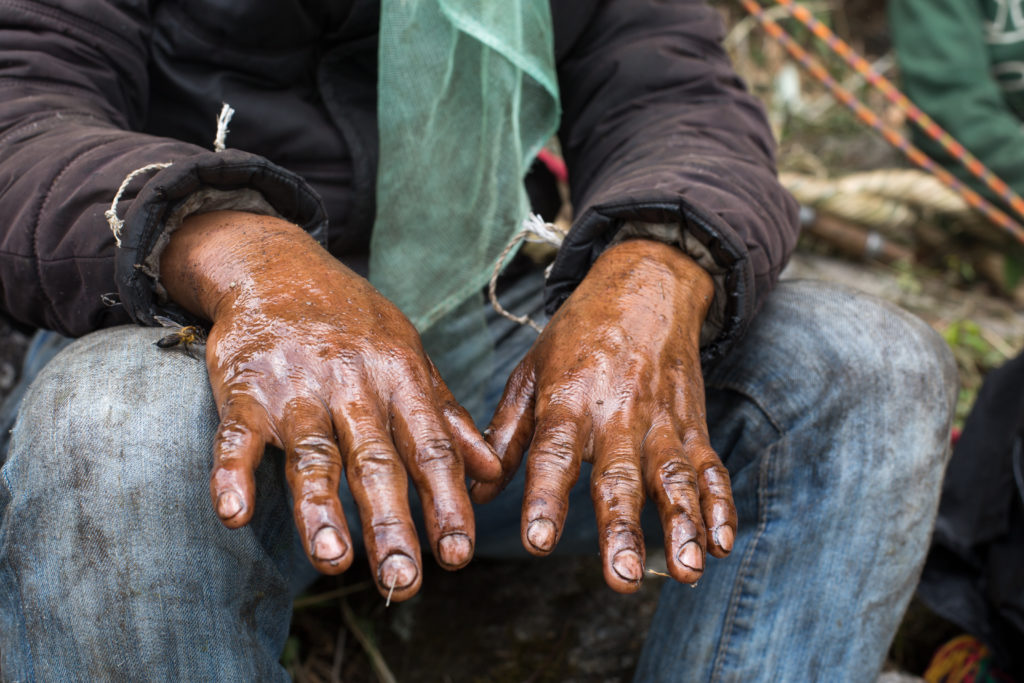
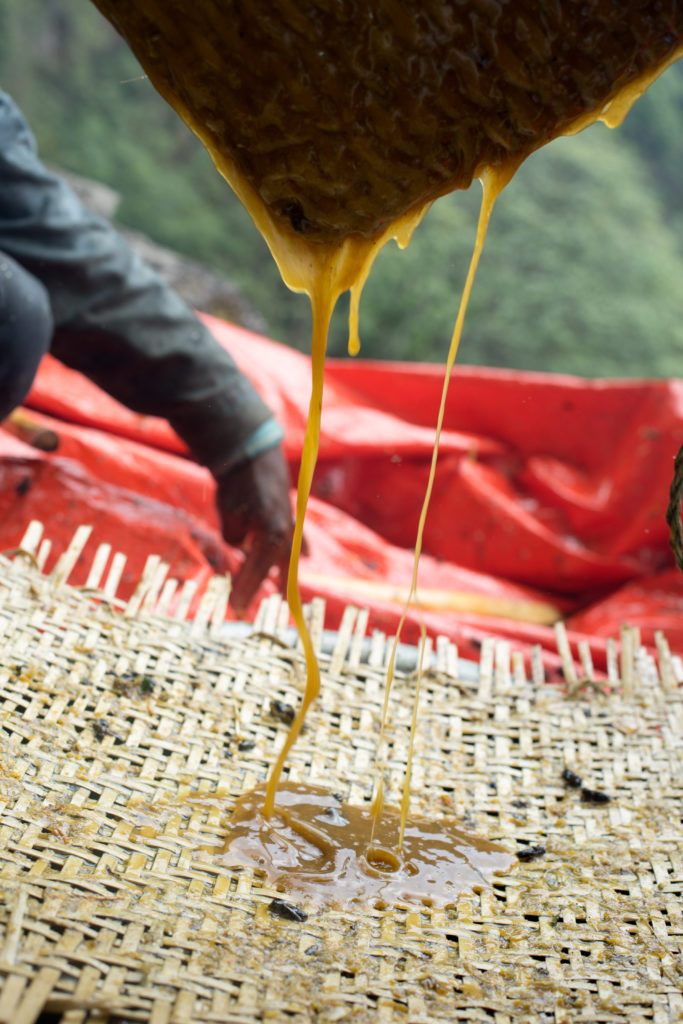
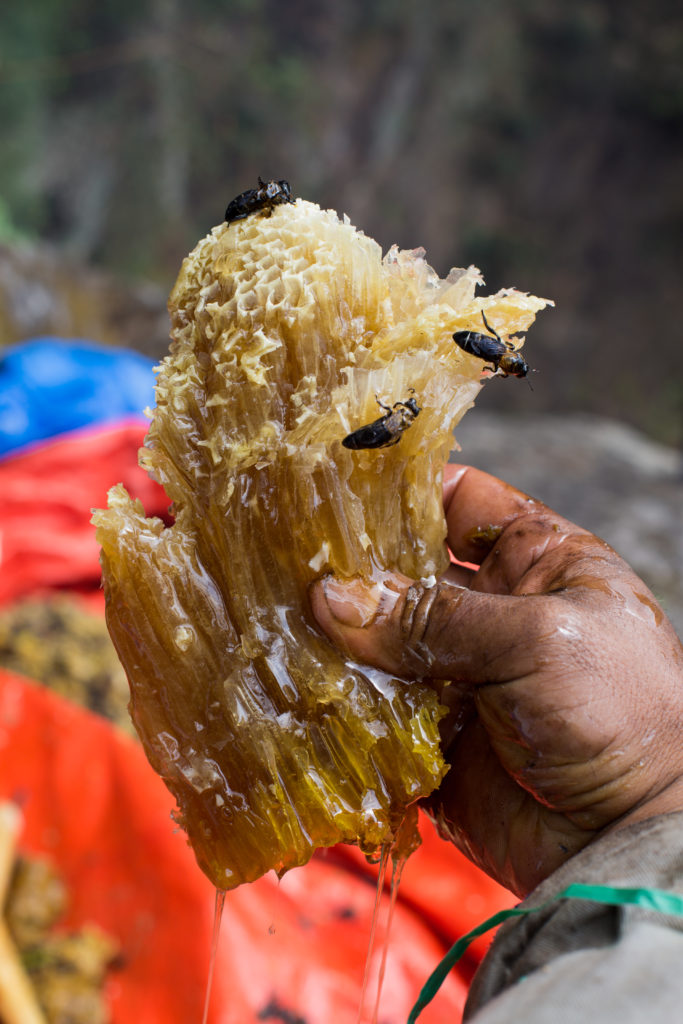
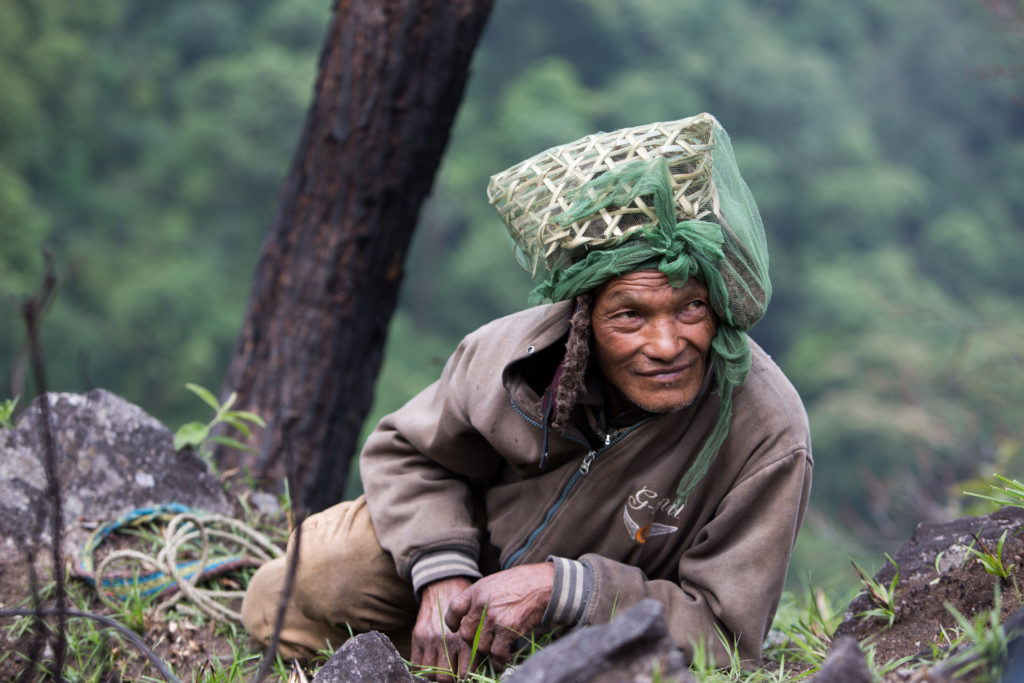
The Gurung tradition of honey hunting has been passed on for more generations than the Gurung themselves can remember. For now, it seems this tradition will continue on for many generations to come.